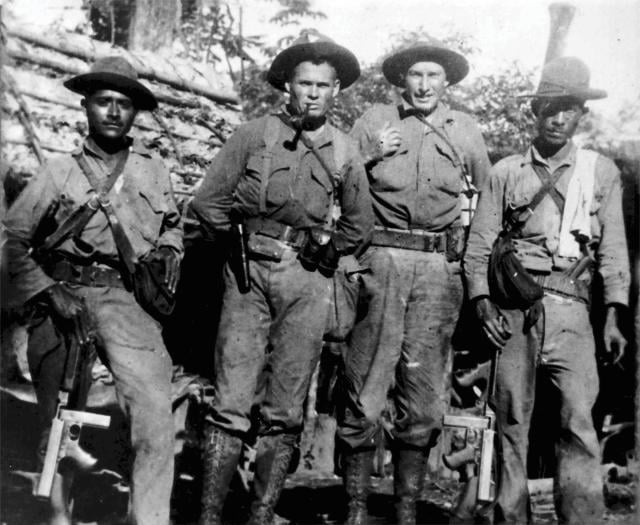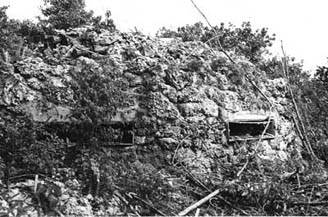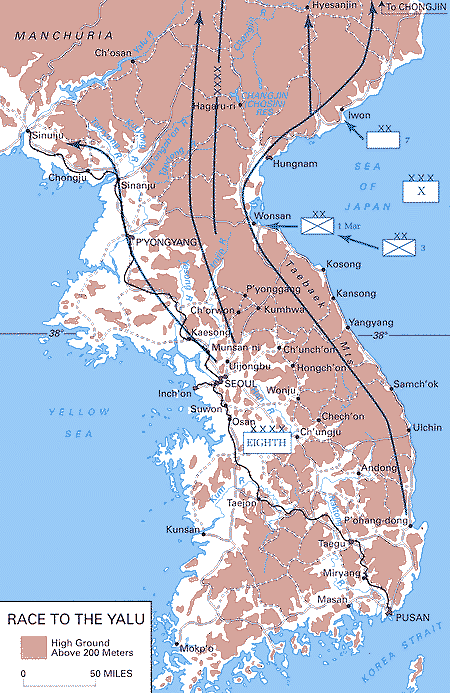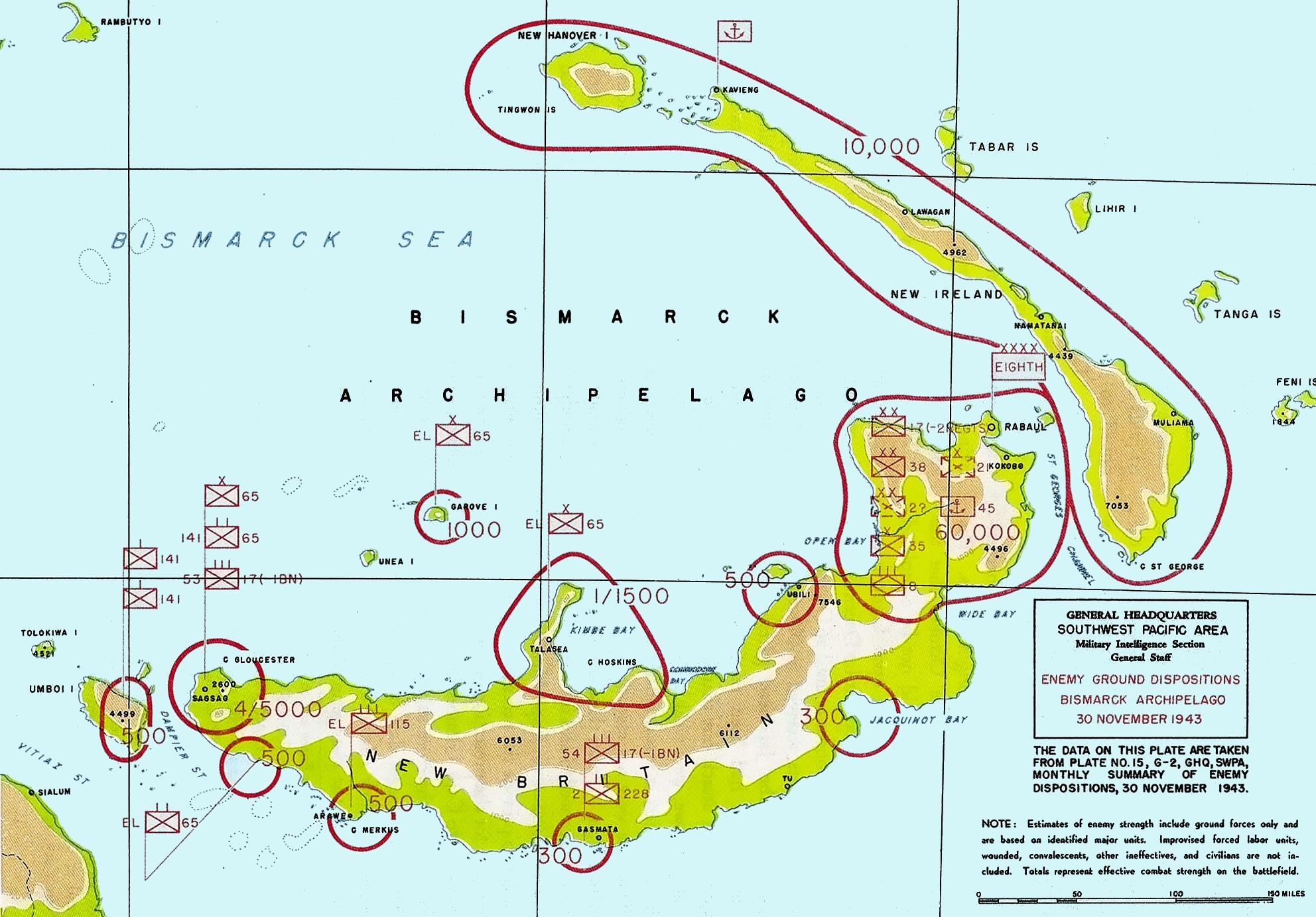|
Chesty Puller
Lewis Burwell "Chesty" Puller (June 26, 1898 – October 11, 1971) was a United States Marine Corps officer. Beginning his career fighting guerillas in Haiti and Nicaragua as part of the Banana Wars, he later served with distinction in World War II and the Korean War as a senior officer. By the time of his retirement in 1955, he had reached the rank of lieutenant general. Puller is the most decorated Marine in American history. He was awarded five Navy Crosses and one Distinguished Service Cross. With six crosses, Puller is second behind Eddie Rickenbacker for citations of the nation's second-highest military award for valor. Puller retired from the Marine Corps in 1955, after 37 years of service. He lived in Virginia and died in 1971 at age 73. Early life Puller was born in West Point, Virginia, to Matthew and Martha Puller. Puller was of English ancestry; his ancestors who came to America emigrated to the colony of Virginia from Bedfordshire, England in 1621. His father was a g ... [...More Info...] [...Related Items...] OR: [Wikipedia] [Google] [Baidu] |
Battle Of Peleliu
The Battle of Peleliu, codenamed Operation Stalemate II by the US military, was fought between the United States and Japan during the Mariana and Palau Islands campaign of World War II, from September 15 to November 27, 1944, on the island of Peleliu. US Marines of the 1st Marine Division and then soldiers of the US Army's 81st Infantry Division, fought to capture an airfield on the small coral island of Peleliu. The battle was part of a larger offensive campaign known as Operation Forager, which ran from June to November 1944 in the Pacific Theater. Major General William Rupertus, the commander of the 1st Marine Division, predicted that the island would be secured within four days. However, after repeated Imperial Japanese Army defeats in previous island campaigns, Japan had developed new island-defense tactics and well-crafted fortifications, which allowed stiff resistance and extended the battle to more than two months. The heavily-outnumbered Japanese defenders put up su ... [...More Info...] [...Related Items...] OR: [Wikipedia] [Google] [Baidu] |
Lieutenant General (United States)
In the United States Armed Forces, a lieutenant general is a three-star general officer in the United States Army, Marine Corps, Air Force, and Space Force. A lieutenant general ranks above a major general and below a general. The pay grade of lieutenant general is O-9. It is equivalent to the rank of vice admiral in the other United States uniformed services which use naval ranks. It is abbreviated as LTG in the Army, LtGen in the Marine Corps, and Lt Gen in the Air Force and Space Force. Statutory limits The United States Code explicitly limits the total number of generals that may be concurrently active to 231 for the Army, 62 for the Marine Corps, and 198 for the Air Force. For the Army and Air Force, no more than about 25% of the service's active duty general officers may have more than two stars. [...More Info...] [...Related Items...] OR: [Wikipedia] [Google] [Baidu] |
Battle Of El Sauce
The Battle of El Sauce, or the Battle of Punta de Rieles or Punta Rieles, took place on the 26 December 1932 during the American occupation of Nicaragua of 1926–1933. It was the last major battle of the Sandino Rebellion of 1927–1933. The incident has its origins in Nicaraguan President José María Moncada's plan to commemorate the completion of the León-El Sauce railway on the 28 December 1932.Musicant, I, The Banana Wars, 1990, New York: MacMillan Publishing Co., Rumors spread that Sandinista rebels planned on crashing the ceremony, so an expedition of eight Marines and 64 Nicaraguan National Guardsmen led by Captain Lewis B. "Chesty" Puller were sent by train towards El Sauce on the 26 December 1932 to secure the area. A Sandinista force led by Juan Pablo Umanzor, meanwhile, was looting a construction company commissary. As the Marines'/National Guard's train passed some ancient ruins, it was fired upon by rebels from both sides of the tracks. Soldiers led by Pul ... [...More Info...] [...Related Items...] OR: [Wikipedia] [Google] [Baidu] |
Battle Of Chosin Reservoir
The Battle of Chosin Reservoir, also known as the Chosin Reservoir Campaign or the Battle of Lake Changjin (), was an important battle in the Korean War. The name "Chosin" is derived from the Japanese pronunciation "''Chōshin'', instead of the Korean pronunciation. The battle took place about a month after the People's Republic of China entered the conflict and sent the People's Volunteer Army (PVA) 9th Army to infiltrate the northeastern part of North Korea. On 27 November 1950, the Chinese force surprised the US X Corps commanded by Major General Edward Almond in the Chosin Reservoir area. A brutal 17-day battle in freezing weather soon followed. Between 27 November and 13 December, 30,000 United Nations Command troops (later nicknamed "The Chosin Few") under the field command of Major General Oliver P. Smith were encircled and attacked by about 120,000 Chinese troops under the command of Song Shilun, who had been ordered by Mao Zedong to destroy the UN forces. ... [...More Info...] [...Related Items...] OR: [Wikipedia] [Google] [Baidu] |
Second Battle Of Seoul
The Second Battle of Seoul was a battle that resulted in United Nations forces recapturing Seoul from the North Koreans in late September 1950. Approaching Seoul Before the battle, North Korea had just one understrength division in the city, with the majority of its forces south of the capital. MacArthur personally oversaw the 1st Marine Regiment as it fought through North Korean positions on the road to Seoul. Control of Operation Chromite was then given to Major General Edward Almond, the X Corps commander. General Almond was in an enormous hurry to capture Seoul by September 25, exactly three months after the North Korean assault across the 38th parallel. The advance on Seoul was slow and bloody after the landings at Inchon. The reason was the appearance in the Seoul area of two first-class fighting units of the Korean People's Army (KPA), the 78th Independent Infantry Regiment and 25th Infantry Brigade, about 7,000 troops in all. The KPA launched a T-34 attack, whic ... [...More Info...] [...Related Items...] OR: [Wikipedia] [Google] [Baidu] |
Battle Of Inchon
The Battle of Incheon (), also spelled Battle of Inchon, was an amphibious invasion and a battle of the Korean War that resulted in a decisive victory and strategic reversal in favor of the United Nations Command (UN). The operation involved some 75,000 troops and 261 naval vessels and led to the recapture of the South Korean capital of Seoul two weeks later. The code name for the operation was Operation Chromite. The battle began on 15 September 1950 and ended on 19 September. Through a surprise amphibious assault far from the Pusan Perimeter that UN and Republic of Korea Army (ROK) forces were desperately defending, the largely undefended city of Incheon was secured after being bombed by UN forces. The battle ended a string of victories by the North Korean Korean People's Army (KPA). The subsequent UN recapture of Seoul partially severed the KPA's supply lines in South Korea. The UN and ROK forces were commanded by General of the Army Douglas MacArthur of the United States ... [...More Info...] [...Related Items...] OR: [Wikipedia] [Google] [Baidu] |
Korean War
, date = {{Ubl, 25 June 1950 – 27 July 1953 (''de facto'')({{Age in years, months, weeks and days, month1=6, day1=25, year1=1950, month2=7, day2=27, year2=1953), 25 June 1950 – present (''de jure'')({{Age in years, months, weeks and days, month1=6, day1=25, year1=1950) , place = Korean Peninsula, Yellow Sea, Sea of Japan, Korea Strait, China–North Korea border , territory = Korean Demilitarized Zone established * North Korea gains the city of Kaesong, but loses a net total of {{Convert, 1506, sqmi, km2, abbr=on, order=flip, including the city of Sokcho, to South Korea. , result = Inconclusive , combatant1 = {{Flag, First Republic of Korea, name=South Korea, 1949, size=23px , combatant1a = {{Plainlist , * {{Flagicon, United Nations, size=23px United Nations Command, United Nations{{Refn , name = nbUNforces , group = lower-alpha , On 9 July 1951 troop constituents were: US: 70.4%, ROK: 23.3% other UNC: 6.3%{{Cite ... [...More Info...] [...Related Items...] OR: [Wikipedia] [Google] [Baidu] |
Mariana And Palau Islands Campaign
The Mariana and Palau Islands campaign, also known as Operation Forager, was an offensive launched by United States forces against Imperial Japanese forces in the Mariana Islands and Palau in the Pacific Ocean between June and November 1944 during the Pacific War. The United States offensive, under the overall command of Chester W. Nimitz, followed the Gilbert and Marshall Islands campaign and was intended to neutralize Japanese bases in the central Pacific, support the Allied drive to retake the Philippines, and provide bases for a strategic bombing campaign against Japan. The United States invasion force was supported by a massive combat force. The Fifth Fleet was commanded by Admiral Raymond A. Spruance. Task Force 58, commanded by Vice Admiral Marc Mitscher, consisted of 15 carriers, 7 battleships, 11 cruisers, 86 destroyers and over 900 planes. The invasion force, commanded by Vice Admiral Richmond K. Turner, consisted of 56 attack transports, 84 landing craft and ov ... [...More Info...] [...Related Items...] OR: [Wikipedia] [Google] [Baidu] |
Battle Of Cape Gloucester
The Battle of Cape Gloucester was fought in the Pacific theater of World War II between Japanese and Allied forces on the island of New Britain, Territory of New Guinea, between 26 December 1943 and 16 January 1944. Codenamed Operation Backhander, the US landing formed part of the wider Operation Cartwheel, the main Allied strategy in the South West Pacific Area and Pacific Ocean Areas during 1943–1944. It was the second landing the US 1st Marine Division had conducted during the war thus far, after Guadalcanal. The objective of the operation was to capture the two Japanese airfields near Cape Gloucester that were defended by elements of the Japanese 17th Division. The main landing came on 26 December 1943, when US Marines landed on either side of the peninsula. The western landing force acted as a diversion and cut the coastal road near Tauali to restrict Japanese freedom of movement, while the main force, landing on the eastern side, advanced north towards the airfields. T ... [...More Info...] [...Related Items...] OR: [Wikipedia] [Google] [Baidu] |
New Britain Campaign
The New Britain campaign was a World War II campaign fought between Allied and Imperial Japanese forces. The campaign was initiated by the Allies in late 1943 as part of a major offensive which aimed to neutralise the important Japanese base at Rabaul, the capital of New Britain, and was conducted in two phases between December 1943 and the end of the war in August 1945. Initial fighting on New Britain took place around the western end of the island in December 1943 and January 1944, with US forces landing and securing bases around Arawe and Cape Gloucester. This was followed by a further landing in March 1944 around Talasea, after which little fighting took place between the ground forces on the island. In October 1944, the Australian 5th Division took over from the US troops and undertook a Landing at Jacquinot Bay the following month, before beginning a limited offensive to secure a defensive line across the island between Wide Bay and Open Bay behind which they contained t ... [...More Info...] [...Related Items...] OR: [Wikipedia] [Google] [Baidu] |
Battle For Henderson Field
The Battle for Henderson Field, also known as the Battle of Guadalcanal or Battle of Lunga Point by the Japanese, took place from 23 to 26 October 1942 on and around Guadalcanal in the Solomon Islands. The battle was a land, sea, and air battle of the Pacific campaign of World War II and was fought between the Imperial Japanese Army and Navy and Allied forces, mainly U.S. Marines and Army. The battle was the last of three major land offensives conducted by the Japanese during the Guadalcanal campaign. In the battle, U.S. Marine and Army forces repulsed an attack by the Japanese 17th Army under the command of Lieutenant General Harukichi Hyakutake. The American forces were defending the Lunga perimeter that guarded Henderson Field on Guadalcanal, which the Allies had captured from the Japanese in landings on Guadalcanal on 7 August 1942. Hyakutake's force was sent to Guadalcanal in response to the Allied landings with the mission of recapturing the airfield and driving the All ... [...More Info...] [...Related Items...] OR: [Wikipedia] [Google] [Baidu] |
Action Along The Matanikau (September 1942)
The Actions along the Matanikau—sometimes referred to as the Second and Third Battles of the Matanikau—were two separate but related engagements between the United States and Imperial Japanese naval and ground forces in the Pacific theater of World War II. The actions occurred around the Matanikau River on Guadalcanal Island in the southwestern Pacific during the Guadalcanal campaign. These particular engagements—the first taking place between 23 and 27 September, and the second between 6 and 9 October—were two of the largest and most significant of the Matanikau actions. The Matanikau River area includes a peninsula called Point Cruz, the village of Kokumbona, and a series of ridges and ravines stretching inland from the coast. Japanese forces used the area to regroup from attacks against U.S. forces on the island. From there, they launched further attacks on the U.S. defenses that guarded Henderson Field at Lunga Point on Guadalcanal, as a base to defend against ... [...More Info...] [...Related Items...] OR: [Wikipedia] [Google] [Baidu] |









